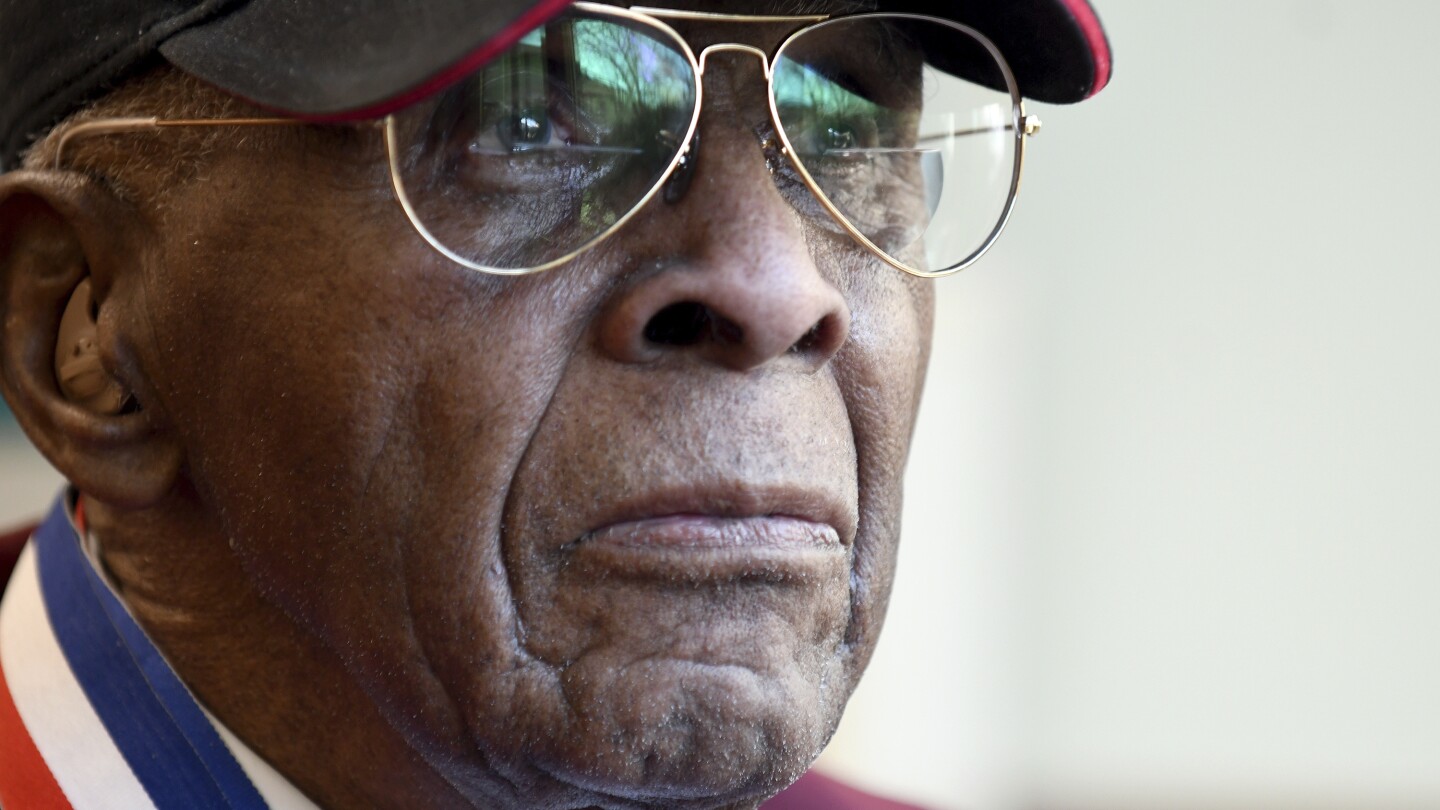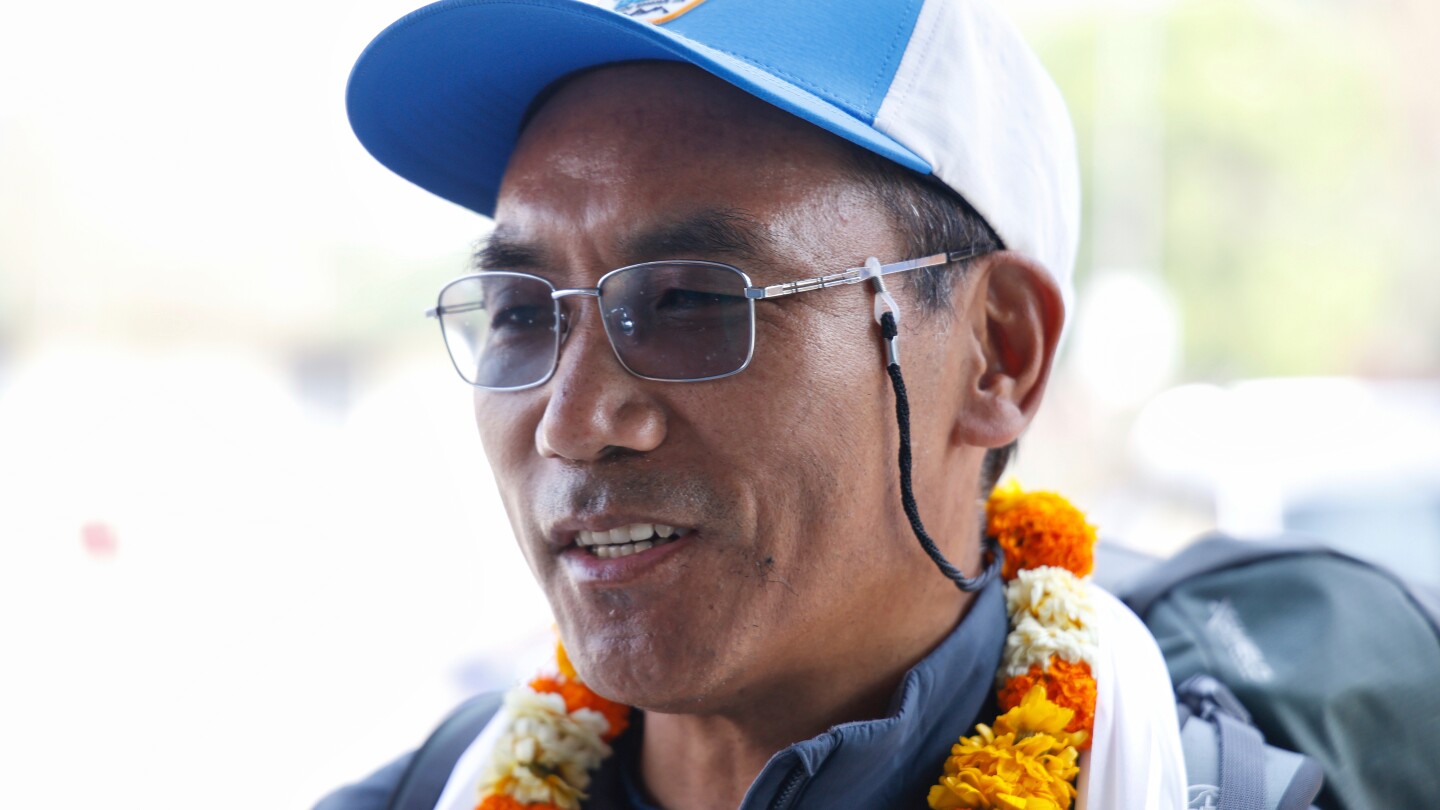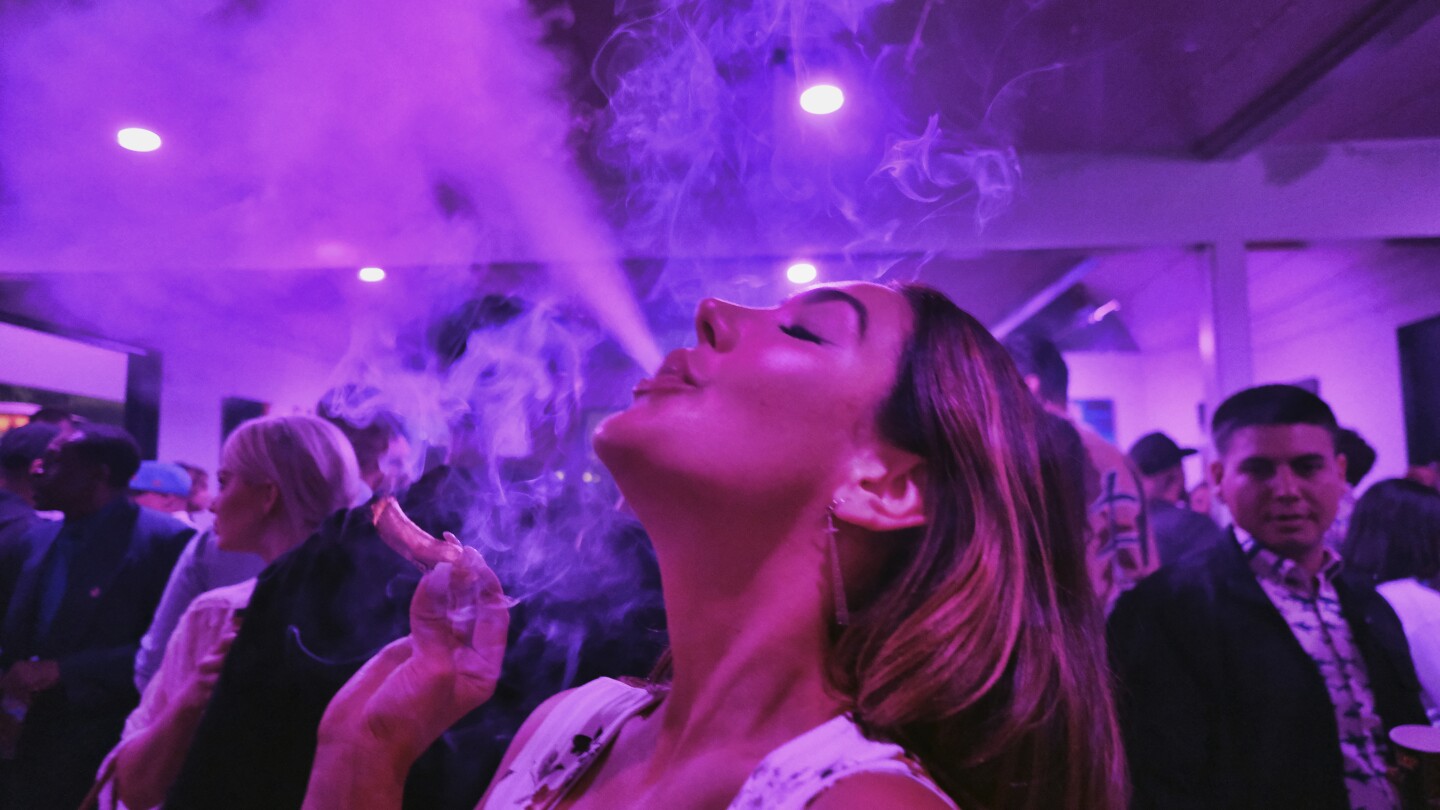Lifestyle
One of the last surviving Tuskegee Airmen remembers struggle for recognition amid Trump’s DEI purge

AURORA, Colo. (AP) — With members of a trailblazing Black Air Force unit passing away at advanced ages, efforts to remain true to their memory carry on despite sometimes confusing orders from President Donald Trump as he purges federal diversity, equity and inclusion programs.
Col. James H. Harvey III, 101, is among the last few airmen and support crew who proved that a Black unit — the 332nd Fighter Group of the Tuskegee Airmen — could fight as well as any other in World War II and the years after.
He went on to become the first Black jet fighter pilot in Korean airspace during the Korean War, and a decorated one after 126 missions. He was one of four Tuskegee Airmen who won the first U.S. Air Force Gunnery Meet in 1949, a forerunner of today’s U.S. Navy “Top Gun” school.
“They said we didn’t have any ability to operate aircraft or operate heavy machinery. We were inferior to the white man. We were nothing,” Harvey said. “So we showed them.”
Shortly after Trump’s January inauguration, the Air Force removed new recruit training courses that included videos of the Tuskegee Airmen.
The removal drew bipartisan outrage and the White House’s ire over what Defense Secretary Pete Hegseth described as “malicious implementation” of Trump’s executive order.
The Air Force quickly reversed course.
Announcing the reversal, Air Force Chief of Staff Gen. David Allvin said in a statement that the initial removal was because the service, like other agencies, had to move swiftly to comply with Trump’s executive order with “no equivocation, no slow-rolling, no foot-dragging.”
The videos were shown to troops as part of DEI courses taken during basic military training. Some photos of Tuskegee Airmen were also among tens of thousands of images in a Pentagon database flagged for removal.
“I thought there was progress in that area, but evidently there isn’t,” said Harvey, who blamed Trump for contributing to what he sees as worsening prejudice in the U.S.
“I’ll tell him to his face. No problem,” he said. “I’ll tell him, ‘You’re a racist,’ and see what he has to say about that. What can they do to me? Just kill me, that’s all.”
The Tuskegee Airmen unit was established in 1941 as the 99th Pursuit Squadron based at the Tuskegee Institute in Alabama. The 99th became the 332nd Fighter Group, which by war’s end destroyed or damaged more than 400 enemy aircraft in North Africa and Europe during the war and sank a German destroyer in action.
Of the 992 Tuskegee Airmen trained as pilots starting in 1942, 335 were deployed, 66 were killed in action and 32 who were shot down became war prisoners.
In 1949, two months after the airmen’s gunnery meet victory in the propeller-driven class, the U.S. Air Force integrated Black and white troops and the Tuskegee Airmen were absorbed into other units.
It took the Air Force almost half a century to recognize 332nd’s last achievement: Its success in aerial bombing and shooting proficiency in the gunnery meet at what is now Nellis Air Force Base in Nevada.
For decades, the winners were listed as “unknown” and their trophy was missing.
“We won them all,” Harvey said. “We weren’t supposed to win anything because of the color of our skin.”
Harvey trained during World War II but was not deployed to combat before the war ended. In Korea, he flew the F-80 Shooting Star jet fighter and earned medals including the Distinguished Flying Cross.
He retired as a lieutenant colonel in 1965 and received an honorary promotion to colonel in 2023.
Trump in 2020 promoted another of the last surviving Tuskegee Airmen, Charles McGee, to brigadier general. McGee died in 2022 at age 102.
Harvey still regards the Air Force Gunnery Meet as his biggest accomplishment, one the Air Force finally recognized in 1993.
Their missing trophy was found in a museum storeroom not long after.
“We were good, and they couldn’t take it away from us,” Harvey said. “We were good. And I’ll repeat it until I die.”
Lifestyle
Queen Elizabeth II’s favorite dog breed race for glory in the UK’s Corgi Derby

LONDON (AP) — Some of the fastest canines on four very short legs have raced for glory in Scotland’s annual Corgi Derby.
The Musselburgh Racecourse Corgi Derby was first held in 2022 to mark Queen Elizabeth II’s 70 years on the throne. The late monarch was a devoted corgi fan who owned almost 30 of the breed over the decades, along with a few dorgis – a corgi-dachshund cross.
Four-year-old Juno beat a 16-strong field of dashing dogs dressed in bright sweaters over the 230-foot (70-meter) race on Saturday at the racecourse outside Edinburgh. She came from behind in the final stretch to beat last year’s winner, Rodney.
The winner and her owners, Alisdair Tew and Fran Brandon, were presented with a trophy and dog treats by tennis coach Judy Murray, mother of Scottish star Andy Murray.
Tew told the BBC that “we trained her for this last year but this year we just resorted to just letting her chasing things, particularly seagulls” on Edinburgh’s Portobello Beach.
“Juno is always ready for treats -– that is probably why she won,” he said.
Elizabeth’s love of corgis began in 1933 when her father, King George VI, brought home a Pembroke Welsh corgi they named Dookie
Corgis were often by Elizabeth’s side in the decades before her death in September 2022 — accompanying her on official tours, reportedly sleeping in their own room at Buckingham Palace and occasionally nipping the ankles of visitors or royal family members.
Three corgis even appeared alongside the queen as she climbed into James Bond’s waiting helicopter in the spoof video that opened the 2012 London Olympics.
Lifestyle
Famed Sherpa guide will attempt to climb Mount Everest for a 31st time and break his own record

KATHMANDU, Nepal (AP) — One of the greatest mountain guides will attempt to scale the world’s highest peak for the 31st time — and possibly the 32nd time as well — and break his own record.
Kami Rita, 55, flew to Mount Everest on Sunday from Kathmandu to lead a group of climbers who will try to reach the 8,849-meter (29,032-foot) summit during the spring climbing season.
“I am mentally, emotionally and physically prepared to climb the mountain,” Kami Rita told The Associated Press at Kathmandu’s airport. “I am in my top physical condition right now.”
He holds the record for the most successful ascents of Mount Everest at 30 times. In May last year he climbed the peak twice.
“My first priority is to get my client to the summit of the peak. Then I will decide on whether I will climb the peak more than one time during the season. It depends on the weather and conditions on the mountain,” he said.
His closest competitor for the most climbs of Mount Everest is fellow Sherpa guide Pasang Dawa, who has made 27 successful ascents of the mountain.
Kami Rita first climbed Everest in 1994 and has been making the trip nearly every year since. He is one of many Sherpa guides whose expertise and skills are vital to the safety and success each year of foreign climbers aspiring to stand on top of the mountain.
His father was among the first Sherpa mountain guides. In addition to his Everest climbs, Kami Rita has scaled several other peaks that are among the world’s highest, including K2, Cho Oyu, Manaslu and Lhotse.
According to Nepal’s Department of Tourism, 214 climbers have been issued permits to attempt Mount Everest from the Nepali side of the peak in the south this climbing season, which ends in May. Most climbing of Everest and nearby Himalayan peaks is done in April and May, when weather conditions are most favorable.
Everest was first climbed in 1953 by New Zealander Edmund Hillary and Nepali Sherpa Tenzing Norgay.
Lifestyle
Marijuana holiday 4/20 coincides with Easter and Passover this year. Here’s what to know

Marijuana culture’s high holiday, known as 4/20, falls this year on Easter Sunday, as well as the last day of Passover, meaning cannabis fans can celebrate in some unusual ways, including an “Easter nug hunt” in Los Angeles, kosher-style THC gummies in New York and a “blaze and praise” drag brunch in Portland, Oregon.
“It seemed appropriate with egg prices today that we’d be searching for something else,” said Brett Davis, who runs the marijuana tour company Weed Bus Los Angeles and organized the “Easter nug hunt.”
Here’s a look at 4/20’s history and how it’s being celebrated this year:
Why 4/20?
The origins of the date, and the term “420” generally, were long murky.
Some claimed it referred to a police code for marijuana possession or was derived from Bob Dylan’s “Rainy Day Women No. 12 & 35,” with its refrain of “Everybody must get stoned,” 420 being the product of 12 times 35.
But the prevailing explanation is that it started in the 1970s with a group of bell-bottomed buddies from San Rafael High School, in California’s Marin County north of San Francisco, who called themselves “the Waldos.”
A friend’s brother was afraid of getting busted for a patch of cannabis he was growing in the woods at nearby Point Reyes, so he drew a map and gave the teens permission to harvest the crop, the story goes.
During fall 1971, at 4:20 p.m., just after classes and football practice, the group would meet up at the school’s statue of chemist Louis Pasteur, smoke a joint and head out to search for the weed patch. They never did find it, but their private lexicon — “420 Louie” and later just “420” — would take on a life of its own.
The Waldos saved postmarked letters and other artifacts from the 1970s referencing “420,” which they now keep in a bank vault, and when the Oxford English Dictionary added the term in 2017, it cited some of those documents as the earliest recorded uses.
How did 4/20 spread?
A brother of one of the Waldos was a close friend of Grateful Dead bassist Phil Lesh, as Lesh once confirmed in an interview with the Huffington Post, now HuffPost. The Waldos began hanging out in the band’s circle, and the slang term spread.
Fast-forward to the early 1990s: Steve Bloom, a reporter for the cannabis magazine High Times, was at a Dead show when he was handed a flyer urging people to “meet at 4:20 on 4/20 for 420-ing in Marin County at the Bolinas Ridge sunset spot on Mt. Tamalpais.” High Times published it.
“It’s a phenomenon,” one of the Waldos, Steve Capper, now 69, once told The Associated Press. “Most things die within a couple years, but this just goes on and on. It’s not like someday somebody’s going to say, ‘OK, Cannabis New Year’s is on June 23rd now.’”
While the Waldos came up with the term, the people who made the flier that was distributed at the Dead show — effectively turning 4/20 into a holiday — remain unknown.
How is it celebrated?
With weed, naturally.
In New York City, the cannabis brand Tokin’ Jew is advertising a kosher-style THC gummy line, “Tokin’ Chews,” designed to meet dietary restrictions for Passover.
Davis said he expected 300 people to partake in the West Hollywood Easter nug scavenger hunt this weekend, aided by a mobile app leading them through participating dispensaries, trivia challenges and “stoner activities.” There is a $500 cash prize.
In Portland, Bar Carlo is hosting the “blaze and praise” drag brunch. Cannabis consumption isn’t allowed onsite — “Please blaze before you arrive or go for a walk in the neighborhood in between performances,” the event listing reads — but there will be a door-prize gift basket from a local dispensary.
Bar owner Melinda Archuleta said the brunch is a dry run for hosting Pride month events in June. She herself doesn’t care much for marijuana, but as a Mexican American who has been influenced by Catholicism, she is interested in seeing the two cultures melded “in a cheeky way.”
“I’m really looking forward to seeing how the queens do it,” Archuleta said. “We’ve obviously given them carte blanche to do whatever they want — it’s 21 and up — so it doesn’t matter if it’s sacrilegious or borderline offensive.”
There are bigger celebrations, too, including the Mile High 420 Festival in Denver and one put on by SweetWater Brewing in Atlanta. Hippie Hill in San Francisco’s Golden Gate Park historically has attracted massive crowds, but the gathering was canceled for a second straight year, with organizers citing a lack of financial sponsorship and city budget cuts.
Just north of the Bay Area, Lagunitas Brewing in Petaluma, California, releases its “Waldos’ Special Ale” every year on 4/20 in partnership with the term’s coiners.
4/20 also has become a big industry event, with vendors gathering to try each other’s wares.
What about the politics?
There are 24 states that allow recreational marijuana and 14 others allowing it for medical purposes. But the movement recently has suffered some setbacks, with voters in Florida, North Dakota and South Dakota deciding not to adopt legalization measures last November.
Several states also have cracked down on intoxicating products derived from hemp, which have been widely sold even in prohibition states thanks to a loophole in the federal Farm Bill.
Marijuana remains illegal under federal law. As a candidate, President Donald Trump said he would vote for Florida’s amendment and signaled support for reclassifying marijuana as a less dangerous drug, a process started by the Biden administration.
But his administration has not indicated cannabis policy is a priority. A fact sheet released by the White House last month complained that marijuana decriminalization in Washington, D.C., was an example of “failed policies” that “opened the door to disorder.”
A bipartisan group of senators last week reintroduced legislation that would ensure states can adopt their own cannabis policies and remove certain financial hurdles for the industry, such as letting entities deduct business expenses on their taxes.
Charles Alovisetti, a lawyer with the cannabis industry law firm Vicente LLP, said he hopes the administration will push forward with marijuana reform at the federal level, saying “it does align with some of their policy objectives — namely reducing criminal activity, or cartel activity.”
He also encouraged advocates to keep pushing, noting some measures such as improving banking access for marijuana businesses might pass as part of larger legislative packages.
“You continue speaking up, even if the political momentum isn’t there,” Alovisetti said. “It’s only possible if you stay in everyone’s ear.”
-

 Education2 days ago
Education2 days agoHarvard’s battle with the Trump administration is creating a thorny financial situation
-

 Sports2 days ago
Sports2 days agoClint Dempsey speaks to CNN over his concerns over the USMNT heading into its home World Cup
-

 Europe2 days ago
Europe2 days agoTrump’s ‘lone ranger’: How Steve Witkoff became the defacto point man on America’s foreign policy challenges
-

 Conflict Zones2 days ago
Conflict Zones2 days agoIran has ‘doubts’ about US intentions ahead of nuclear talks | Politics News
-

 Middle East1 day ago
Middle East1 day agoTunisian court hands opposition figures lengthy jail terms | Human Rights News
-

 Conflict Zones2 days ago
Conflict Zones2 days ago‘How do I live like this?’ asks Gaza boy who lost arms in Israeli attack | Gaza News
-

 Conflict Zones2 days ago
Conflict Zones2 days agoTrump says US may ‘pass’ on helping end war if Russia, Ukraine resist deal | Russia-Ukraine war News
-

 Europe1 day ago
Europe1 day agoVance, Vatican officials engage in ‘exchange of opinions’ over migrants




